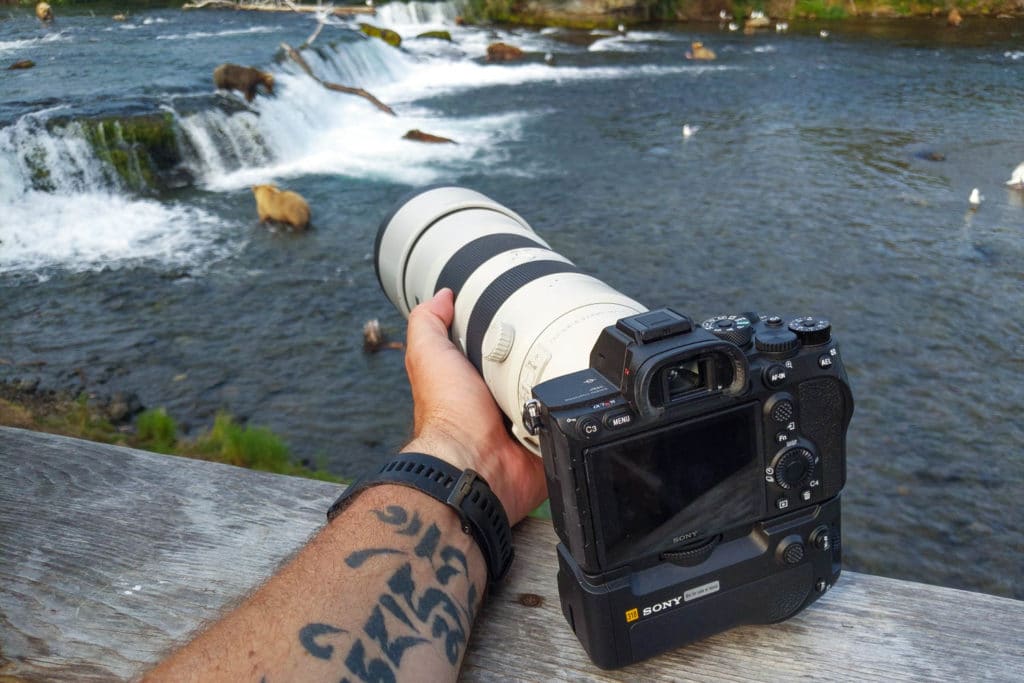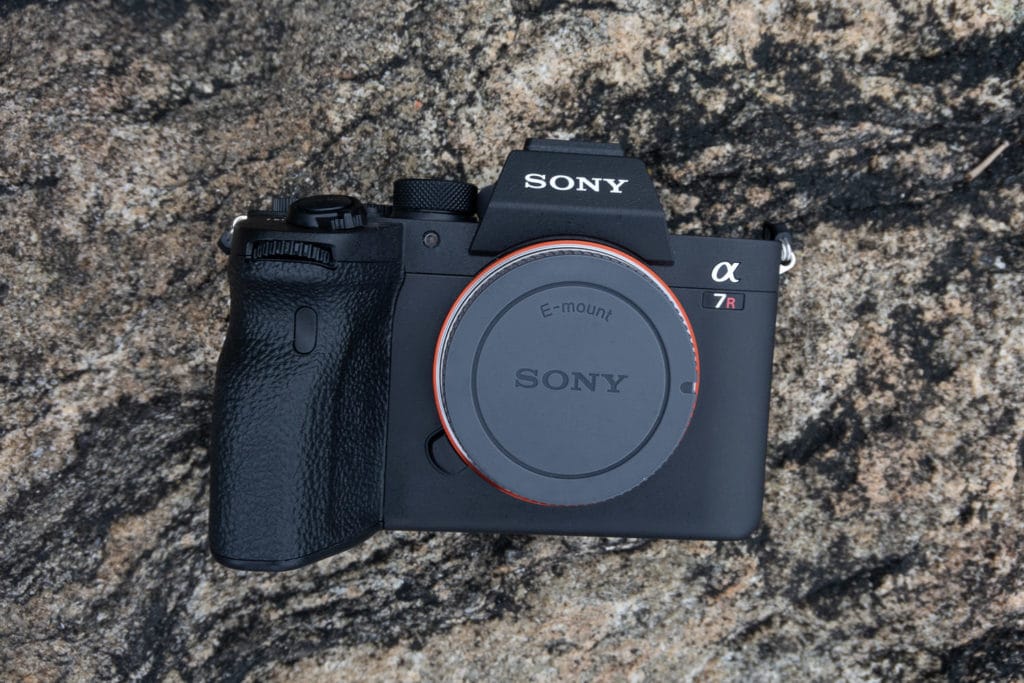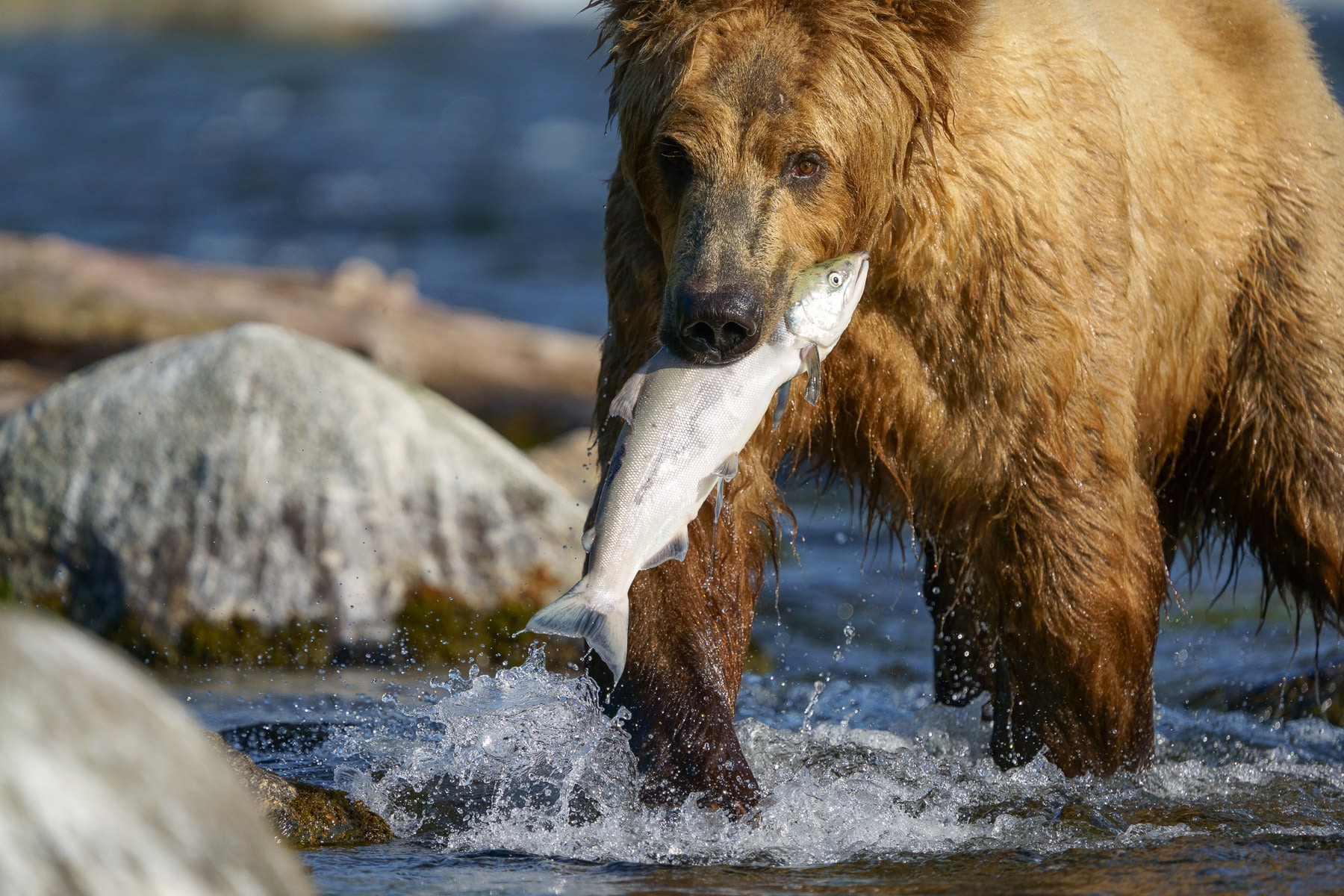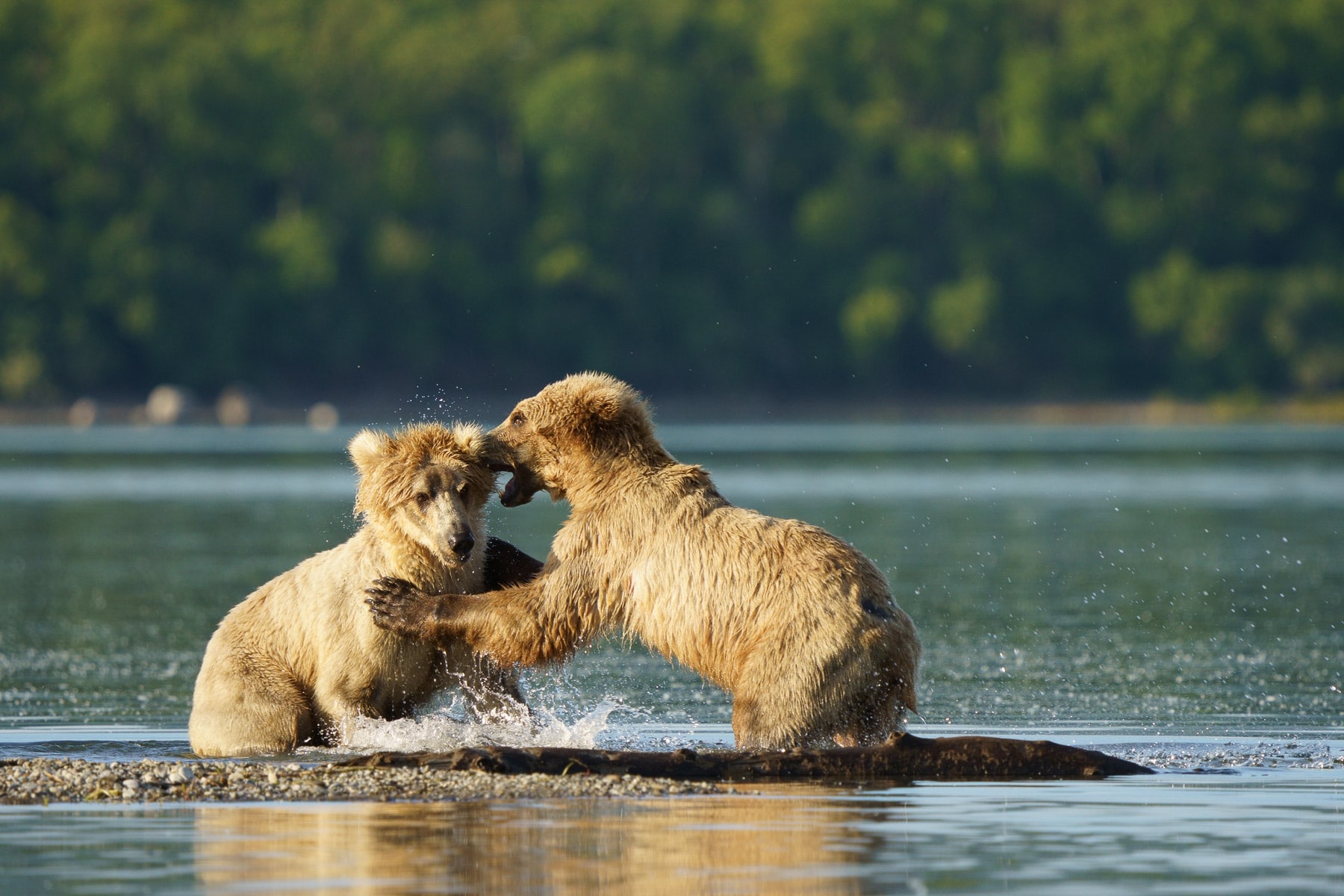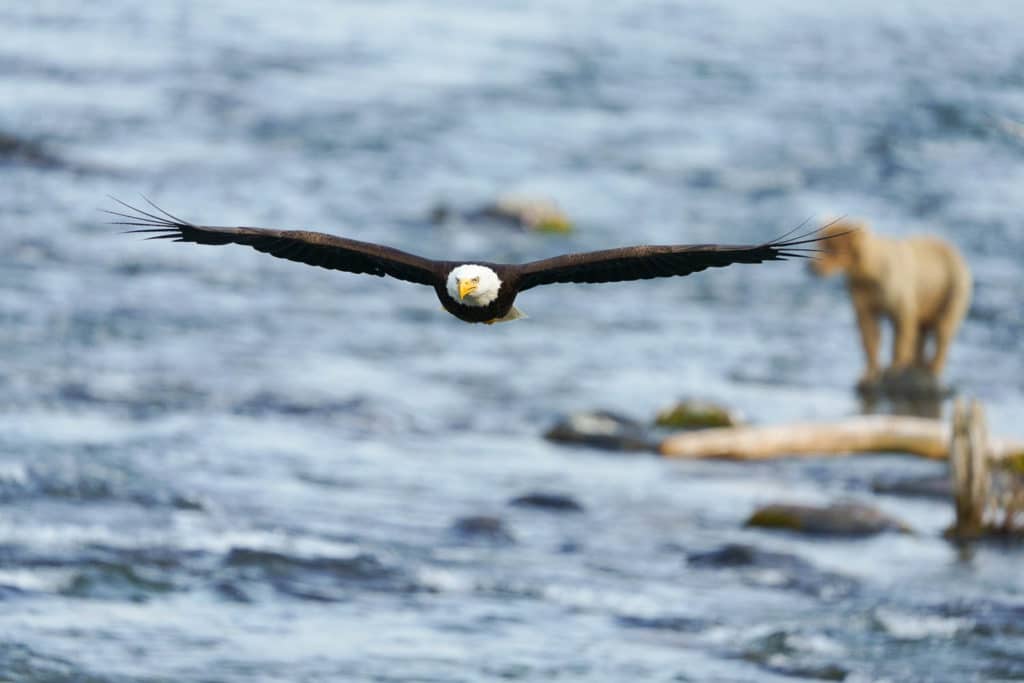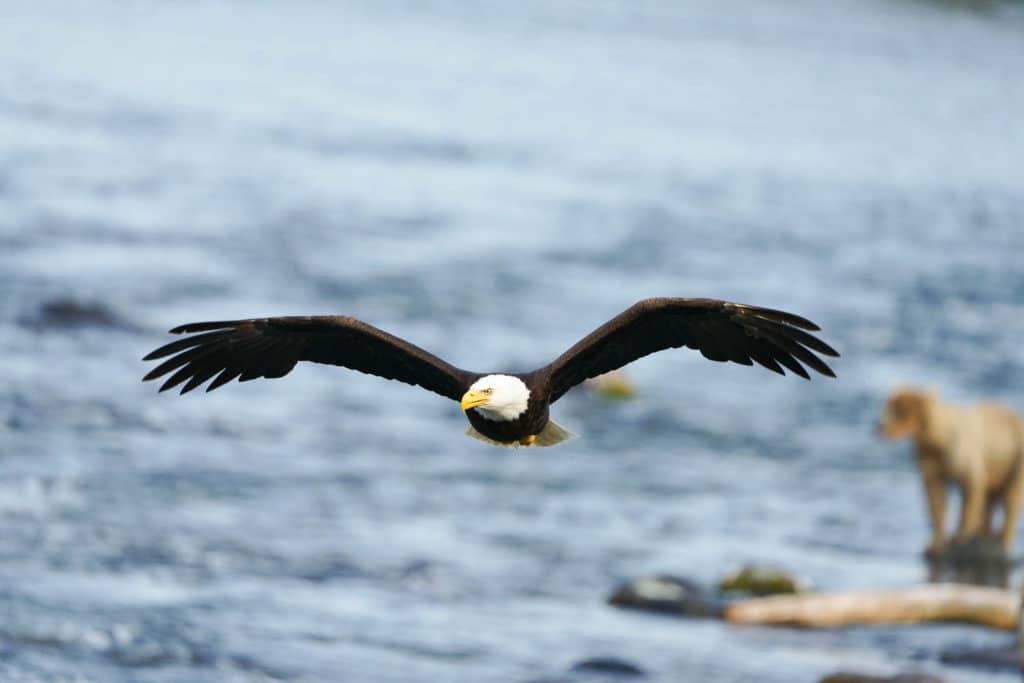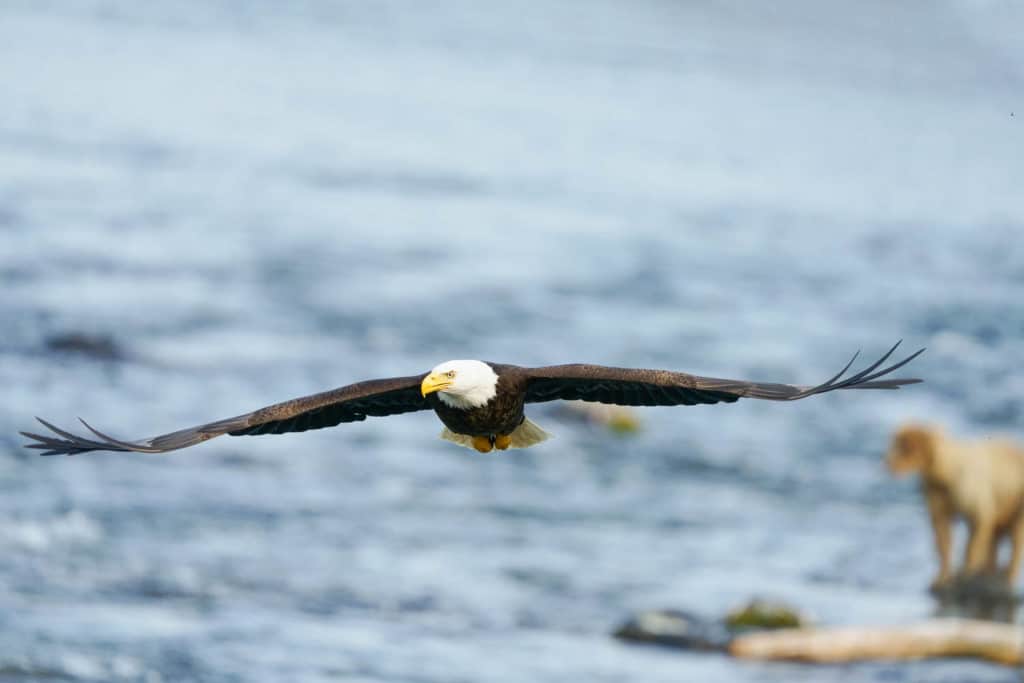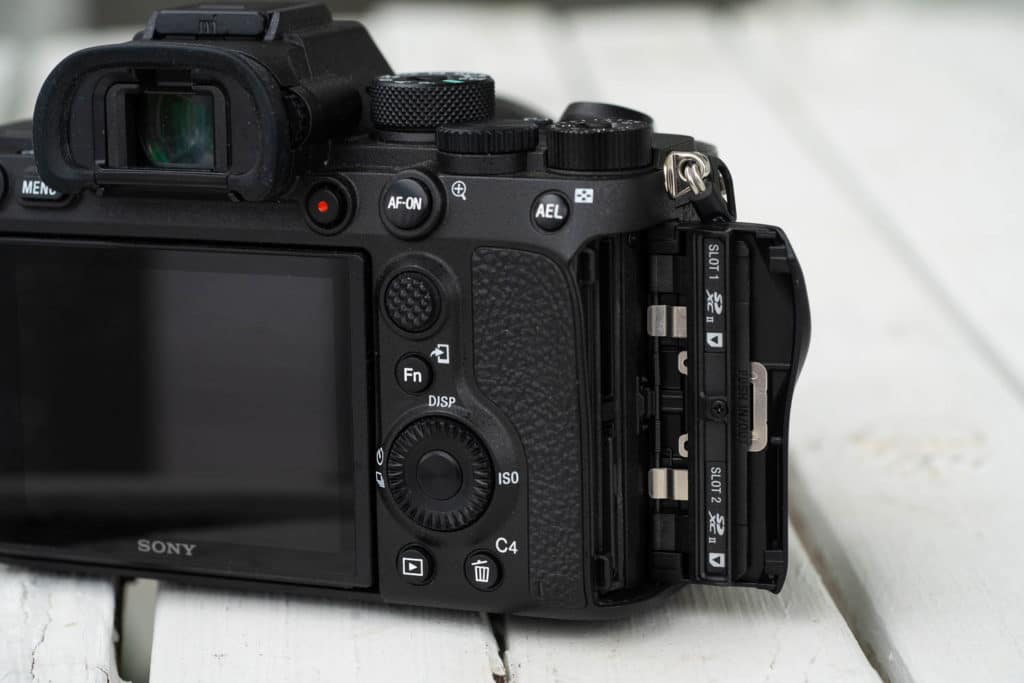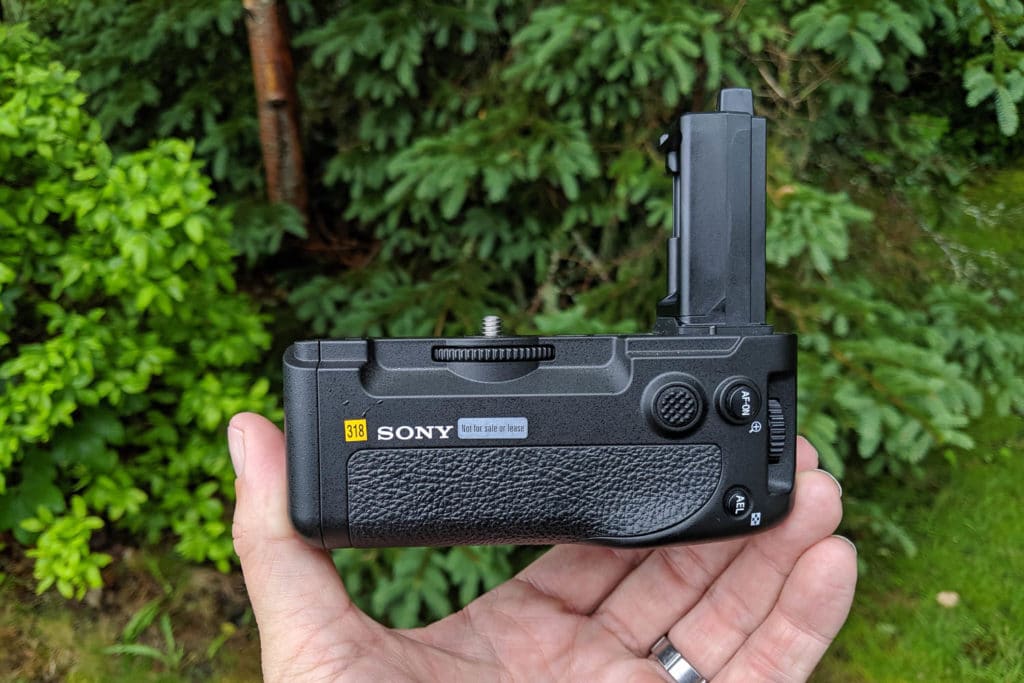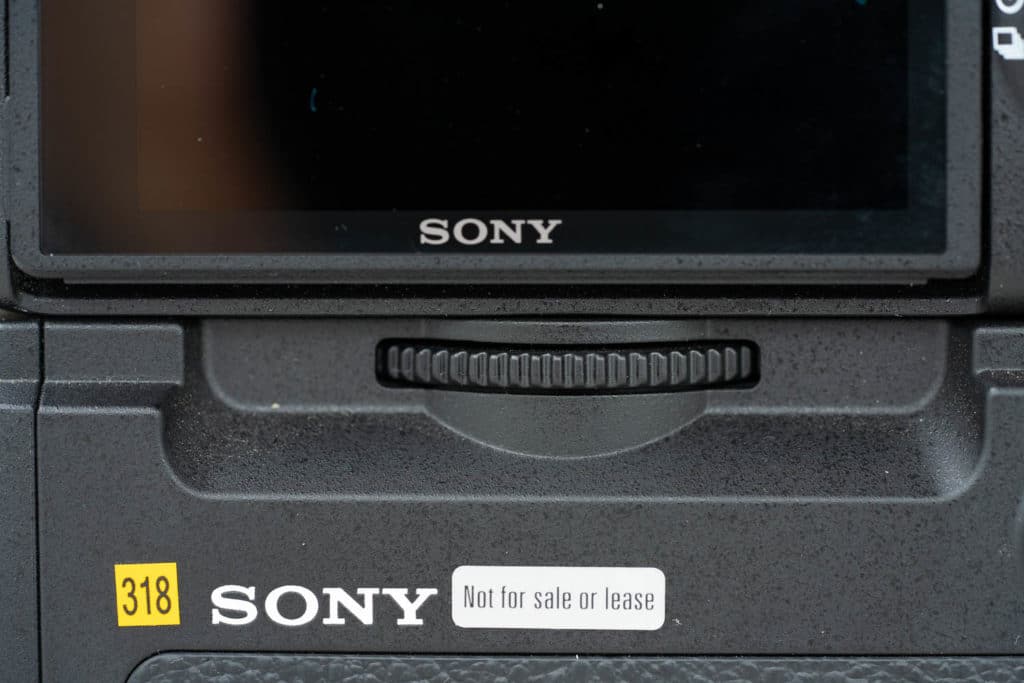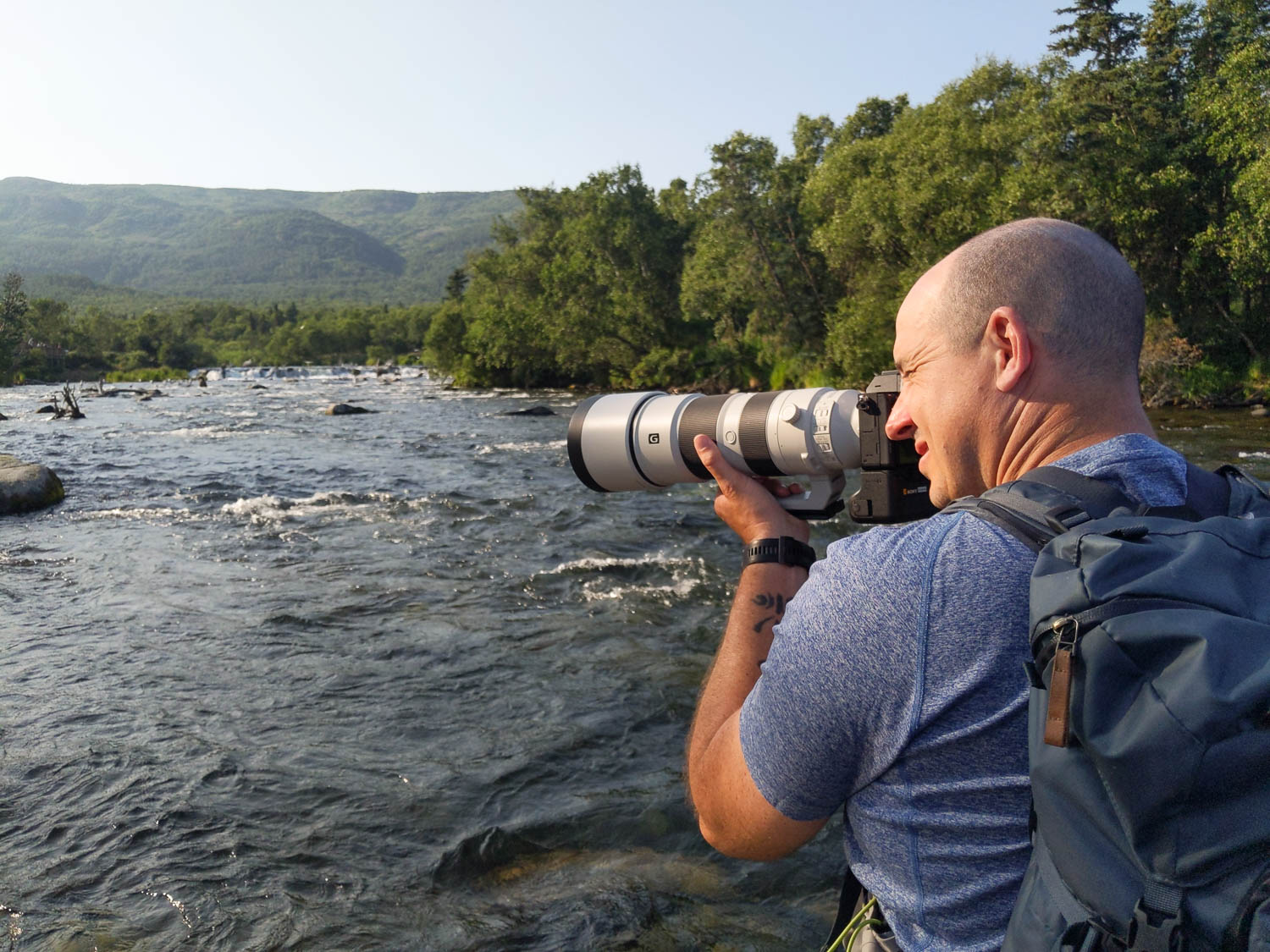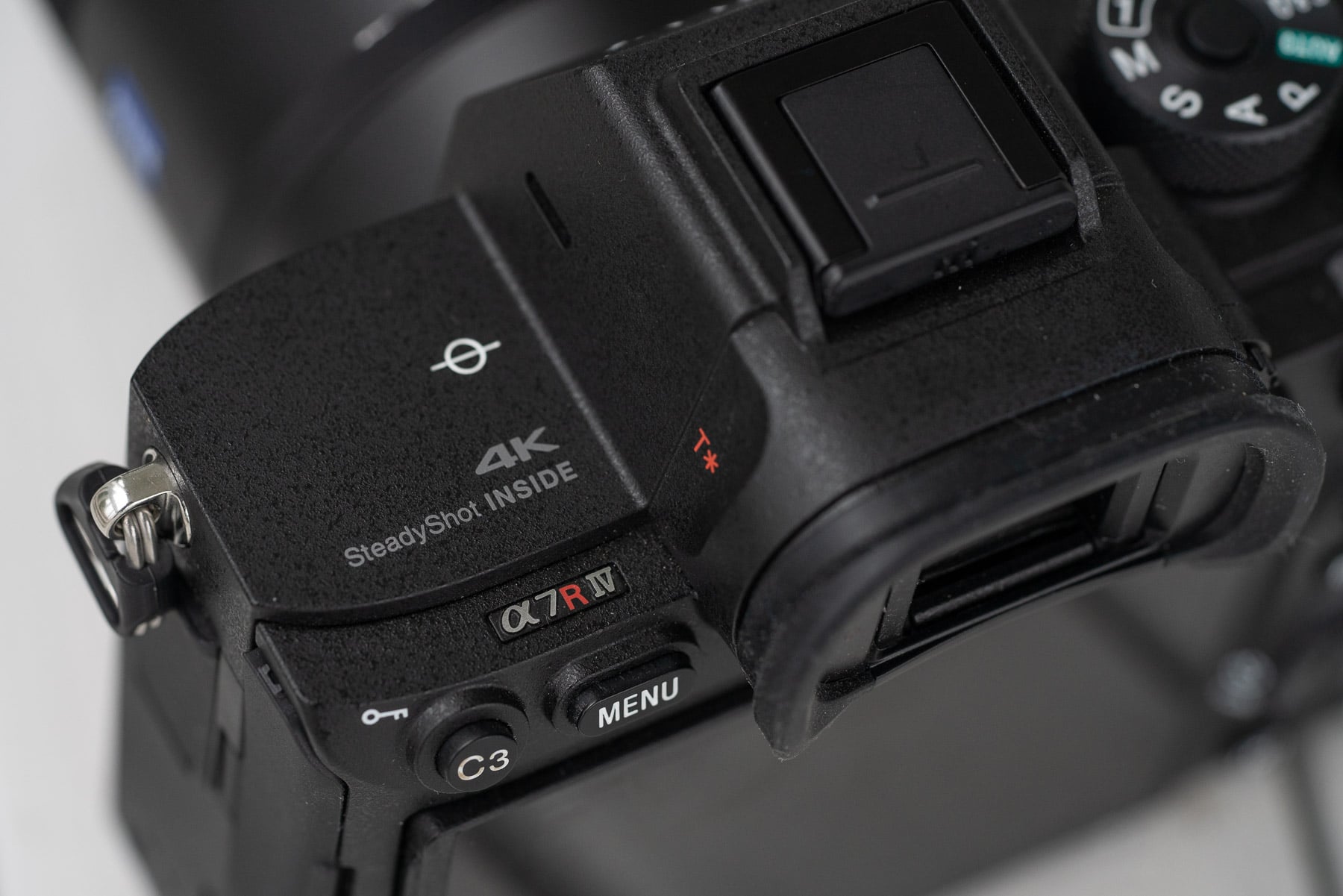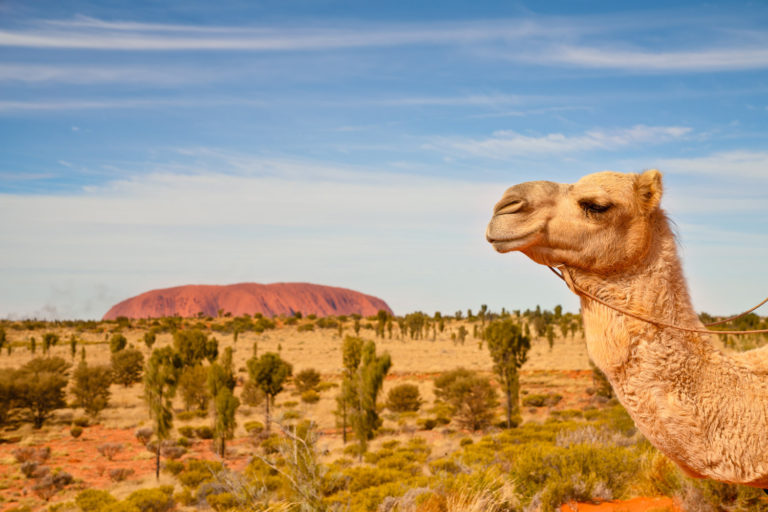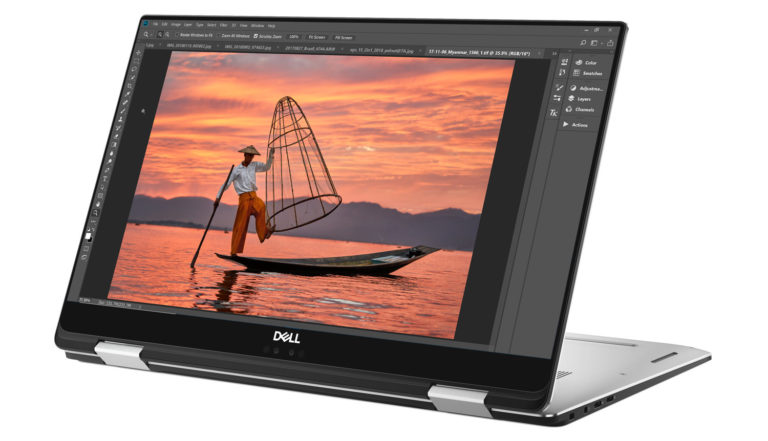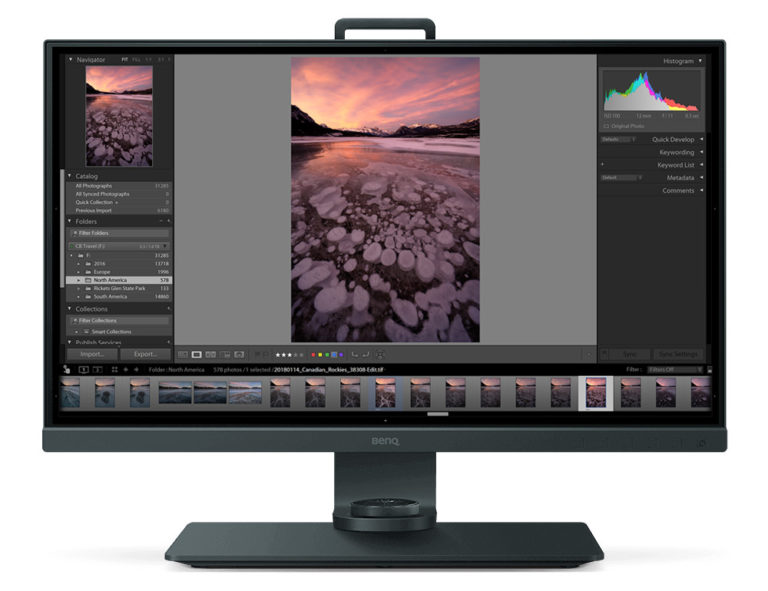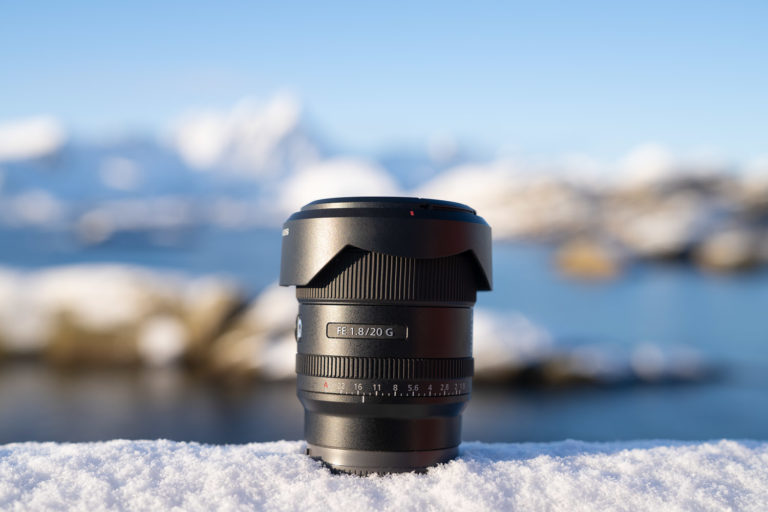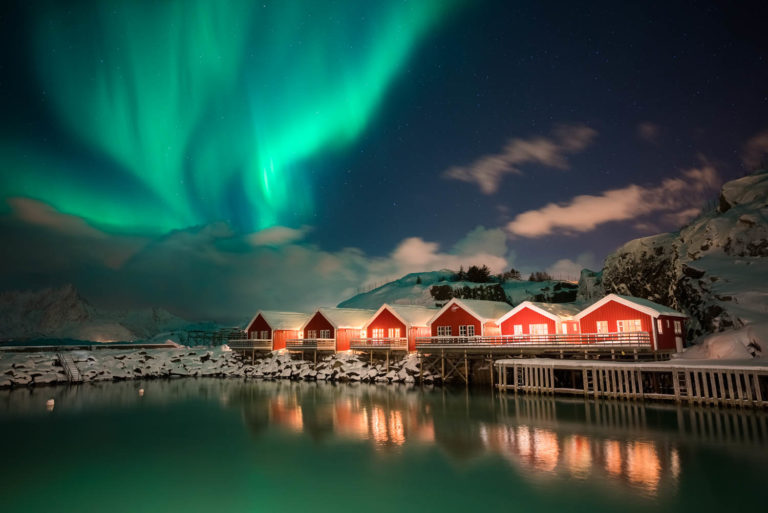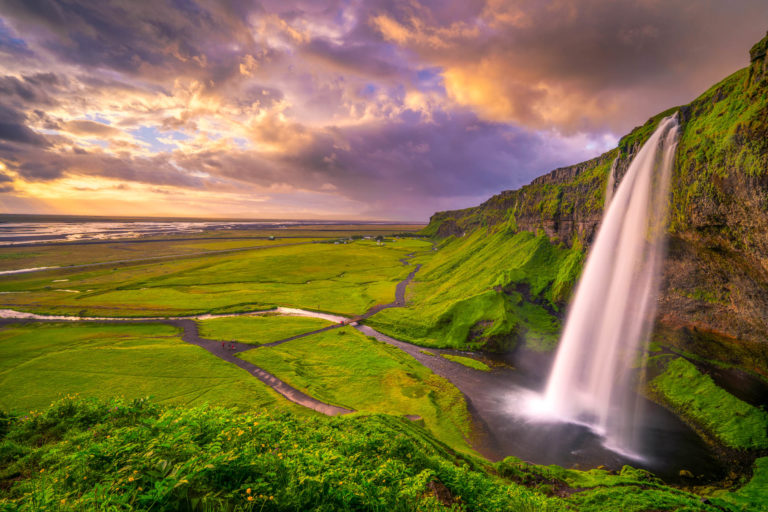With the launch of the new Sony a7R IV 61 mp full-frame mirrorless camera, there is undoubtedly a large number of very excited photographers out there wanting to learn more about this camera and how it operates out there in the real world. Fortunately, being a Sony Artisan has its perks and I was able to spend about a week with the a7R IV up in Alaska photographing a variety of wildlife, with an emphasis on Alaskan Coastal Brown Bears as well as several Bald Eagles.
Initially, I planned to release a full review of this camera on the day it launches (today), but Alaska itself had other plans. Because of the intense wildfires in the area, I wasn’t able to spend much time shooting landscapes, which is one of the biggest genres of photography for a camera like this. Additionally, being in Alaska not too long after the Summer Solstice, photographing the Milky Way was also out of the picture because it never really got dark enough. Long story short, I will save my in-depth review for a later date and instead focus this article into more of a real-world hands-on preview, which allows me to talk about the new ergonomics, incredible image sensor, new IBIS technology and real-time AF capabilities of the Sony a7R IV. So let’s get started!
* Do note that the images shared in this article were not uploaded at full resolution, but rather made ready for the web. As soon as I get permission from Sony, I will release a few images at full res for you to look at.
Sony a7r IV Specs
When Sony first reached out to me about this camera, everything was incredibly hush-hush, so much so that I had no idea which model of camera they wanted to send me to test out. They couldn’t even provide a spec sheet or white paper to detail out the camera specs, but instead offered an hr long phone call to provide details about the camera. The following are some of my notes from that phone call mixed together with information I gathered when I actually started using the a7R IV. I will update this section once the full specs are released to the public…
World’s first(1) 35mm full-frame 61.0 MP(2) back-illuminated Exmor R™ CMOS image sensor with latest-generation BIONZ X™ image processor
15-stop(3) dynamic range at low sensitivities, resulting in smooth, natural gradations ranging from deep shadows to highlights
High-speed continuous shooting at up to 10 fps(4) with full AF / AE tracking for approximately seven seconds(5) in full-frame mode with an increased buffer memory, and approximately three times as long in APS-C mode
567 focal-plane phase-detection AF points covering 74% of image area and 425 contrast AF points
Debut of Real-time Eye AF for movie recording(6) and advanced Real-time Tracking(7) plus Real-time Eye AF for still image recording
Features an APS-C crop mode delivering stunning high resolution images of 26.2MP(2)
5.76 million dot UXGA (Ultra-XGA) OLED Tru-Finder™ electronic viewfinder with outstanding detail, brightness and contrast
Upgraded connectivity and operability including high-speed Wi-Fi support, wireless PC remote connectivity(8), FTP wireless transfer, faster data transfer via USB and more
Professional 4K movie recording functionality including full pixel readout with no pixel binning in Super 35mm mode(9), S-Log3, HDR workflow support
Multi Interface Shoe™ with digital audio interface delivers the high-quality sound recording with Sony’s new microphone and XLR microphone adaptor
Additional enhancements to the body design include an improved grip and button layout for improved control with compact, lightweight body
- New 5 Axis IBIS designed specifically for the high resolution of this sensor
- Dual UHS-II Card Slots
- Not Blackout Free, but improved minimal visual lag when shooting high FPS
- Redesigned shutter mechanism to suppress all vibrations
- Increased Shutter life span (500k)
- 16-bit processing with 14-bit image files
- NEW 1:1 image ratio option (along with 4:3, 16:9 & 3:2 options)
- NEW Pixel Shift Option (16 images at 1/2 pixel distance) = 240 MP images
- NEW AF down to -3 EV
- NEW AF doesn’t have to stop down the aperture to focus
- NEW Eye AF for Movies (coming after launch via firmware)
- NEW Adjustable Focus Spot color selection: White or Red)
- NEW option to save camera settings to SD card
- You can access the menu while the buffer is being used
- USB C 3.2
- Improved Weather Sealing on all gaskets, including far superior protection for the bottom of the camera.
Build Quality and Design
One of the biggest surprises with the Sony a7R IV can be found with the new subtle design and ergonomic changes to the camera. The truth is that this camera simply feels so much more comfortable to use than the last three generations of Sony mirrorless bodies. So whats new?
First and foremost, the grip of itself is now a good amount deeper and a touch farther away from the lens mount, providing more space for your fingers to breathe and comfortably hold the camera while in use. At 6’3, I have big hands, so this is a very welcome addition!
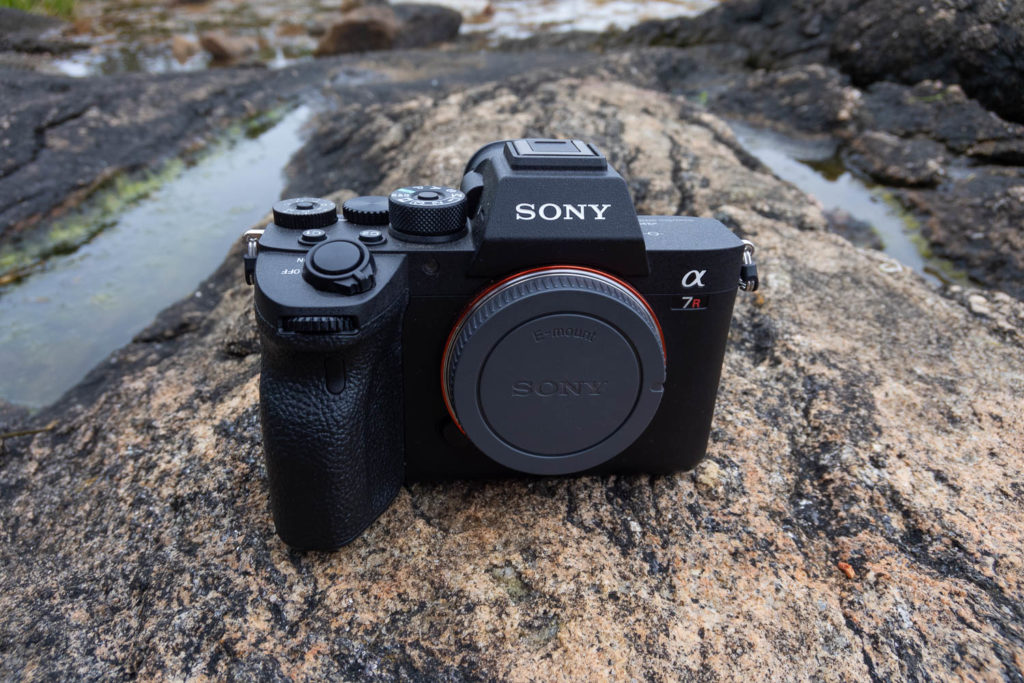
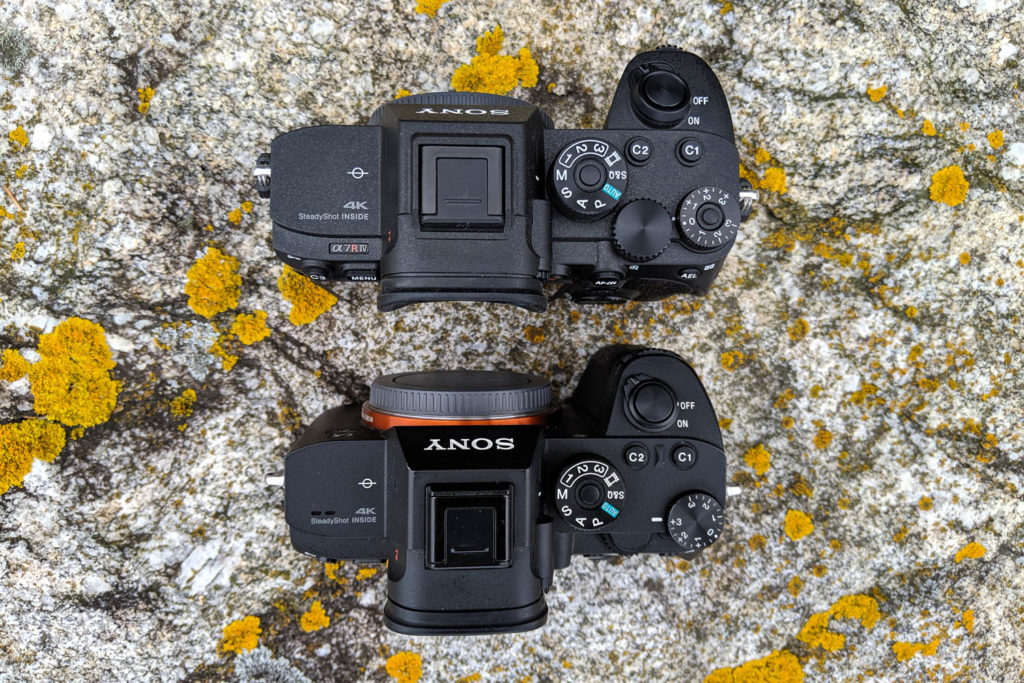
Additionally, all of the buttons along with the rear joystick have been enlarged and feel much more tactile in use. Pressing the buttons is not only easier because they are larger, but they feel solid when pressed. All around they feel more responsive and easier to use.
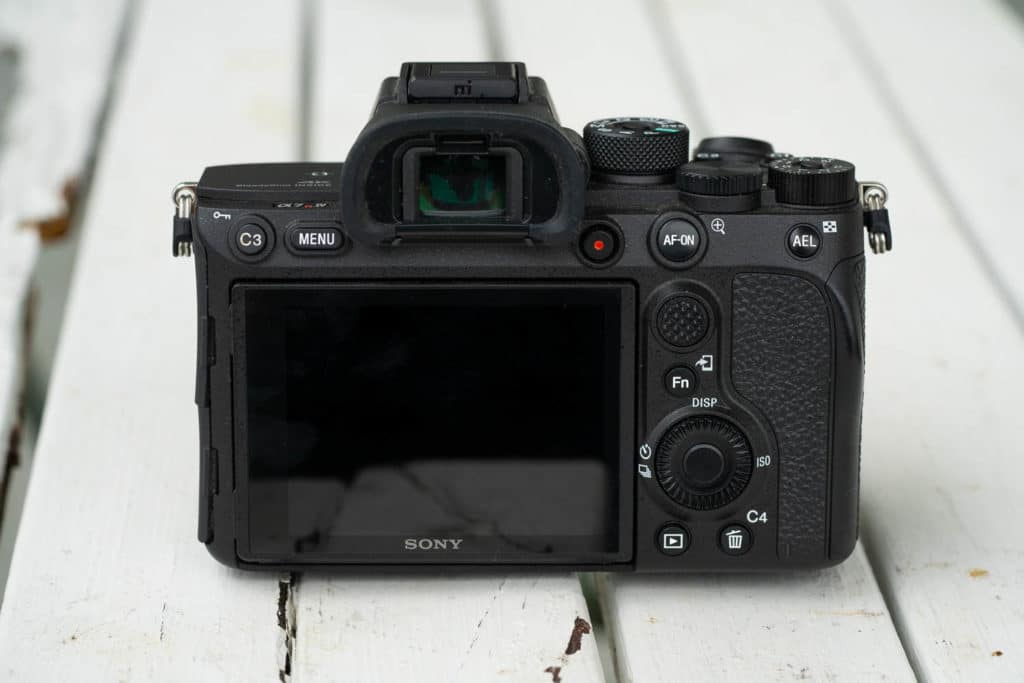
This also goes for the new shutter button, that from the looks of it, is more angled, slightly larger and again, feels better when pressed. With the past generation of bodies, the shutter button itself could feel a little mushy when taking images, that is no longer the case in my opinion. The sound of the shutter is also improved when you are not using silent mode, making the camera sound cleaner, while not louder in the process.
Lastly, you will find improved top and rear dials on the a7R IV. The rear dial that controls shutter speed by default is no longer recessed into the camera body, but rather sits on top, giving the camera a cleaner look. It is also thicker, making it easier to move, especially with gloves on. Additionally, the Exposure Compensation dial on the top of the camera, now has a push-button lock, making much more difficult to accidentally move while using the camera.
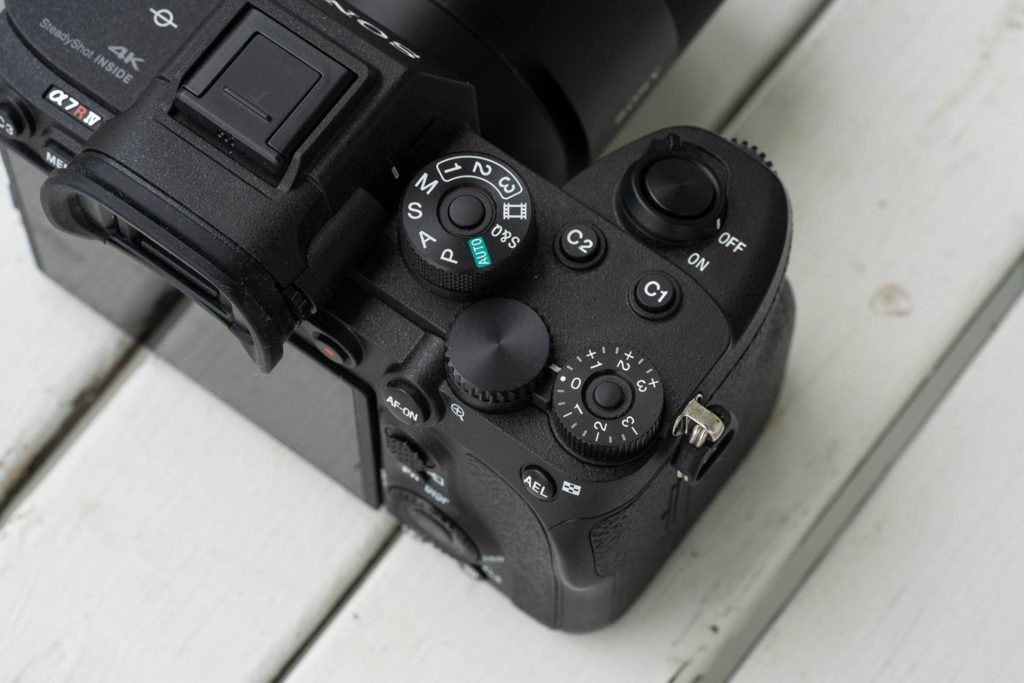
Overall, all of these changes help to make the handling and use of the a7R IV much more enjoyable. While I own multiple copies of each of the a9, a7R III and a7 III bodies, the a7R IV has now set the new standard for Sony Mirrorless ergonomics, making it harder for me to use my other cameras on projects when I know this will be released soon! Needless to say, I can’t wait for all Sony Mirrorless bodies to catch up with these new design changes when they update their product lines!
My Favorite Sony a7R IV New Features
While there are a lot of things worth discussing that are new with the Sony a7R IV, let’s talk about a few of my favorites after using the camera in Alaska for a week.
The 61 MP Sensor
With the ever-increasing megapixel wars seemingly heating up, I was excited to see Sony push the a7R IV into the +60mp range (9504×6336). This is a first for a full-frame camera of any kind, let alone a mirrorless one. Beyond this and you are getting into the Medium Format space with the likes of Fuji’s new GFX 100, which costs $10,000 USD for just the body itself.
The Sony a7R IV is 18mp larger in terms of image resolution when compared to the a7R III (61 vs 42). The difference is nearly the equivalent to a full image taken with a Canon 1DX II. While some people might correctly argue that most photographers never produce large prints of their images (which generally require higher resolution images), the truth is that having the ability to crop in on your images while maintaining a majority of megapixels is probably a far greater benefit for most photographers. For example, when I shot in APS-C mode with the a7R IV, the resulting images is still 26.2 megapixels (6240×4160)! That is a pretty big deal, especially for wildlife, sports and travel photographers.1
All in all I came away very impressed with the images coming out of the a7R IV. Because I was already in Alaska focusing on wildlife photography, the vast majority of images I shot had to captured at higher ISOs than what many landscape, portrait, and travel photographers are used to in order to use fast enough shutter speeds. After using a variety of different Sony telephoto lenses while in Alaska, I can safely say that in order to get the most out of this impressive image sensor, you will want to be using GM lenses (which represents Sony’s best glass). The new Sony 200-600 f/5.6-6.3 G lens did perform well with this camera, but the Sony 100-400 f/4.5-5.6 GM lens really shined when zooming into my images at 100% to check for sharpness with all 60.2 megapixels. I can’t wait to get the rest of the my GM line of lenses on this camera!
New IBIS System
While Sony has had IBIS inside their mirrorless bodies for years, they have worked hard to improve this feature with each generation of cameras. With the a7R IV, this is no different. The reality is that with each increase in megapixels, the more challenging it becomes to effectively stabilize an image for camera shake. These high MP sensors simply pick up more of the imperfections of a camera’s system, after all, zooming into 100% of a 24mp image to check for perfect sharpness is much different than 100% of a 61mp image. Because of this, Sony designed an improved IBIS system and gyro to help account for the 18mp increase in resolution from the a7R IV. The result allows you to shoot at very low shutter speeds with pretty remarkable results.
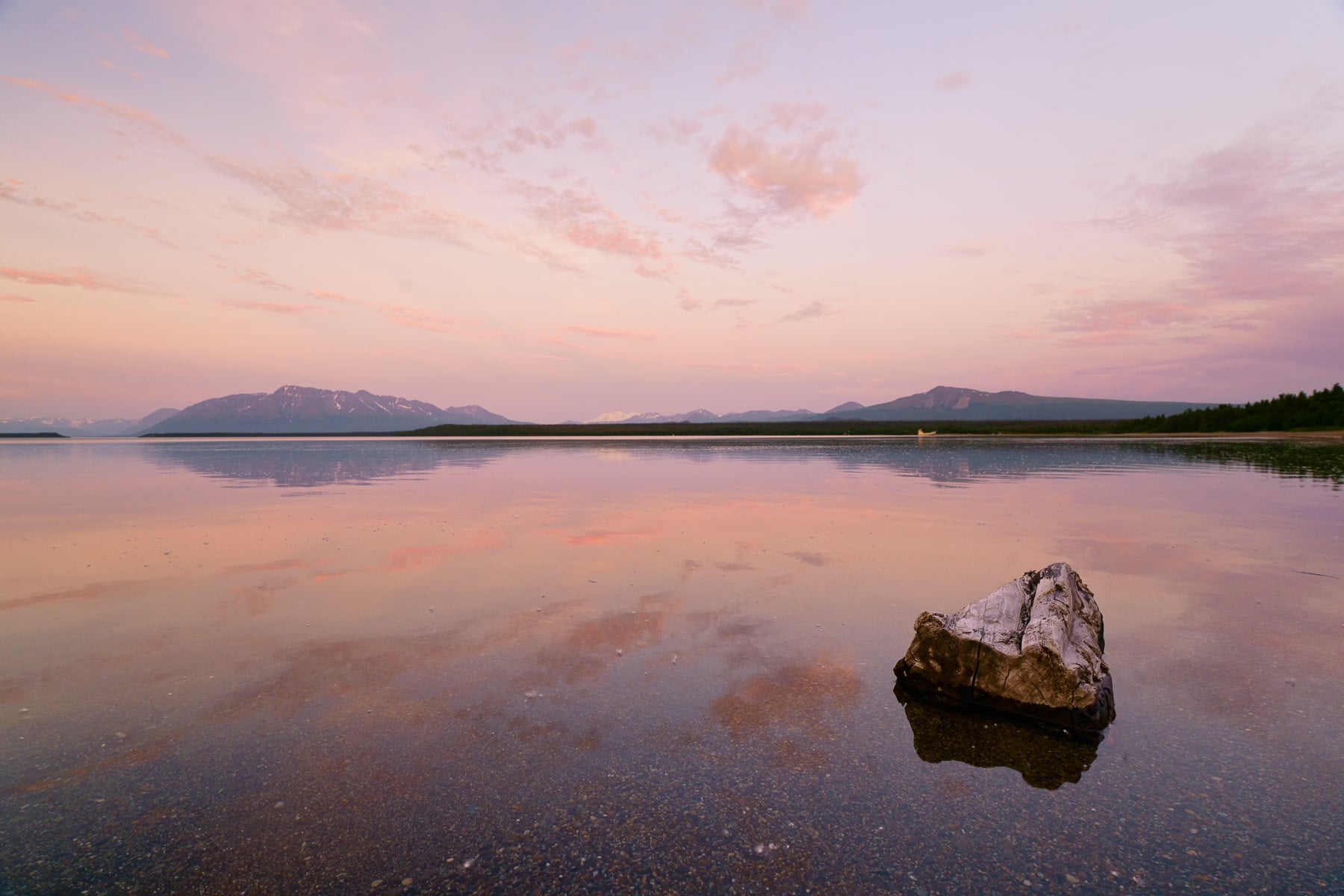
Vastly Improved AF System
One of the most exciting improvements to the a7R lineup is the new AF system found in the a7R IV. Sony has taken many elements of what has made the a9 such an amazing auto-focusing beast and brought them to the R IV, such as Real-Time Tracking/Eye AF as well as the AI improvements that came to the a9 back in April via a firmware update. While I wouldn’t go so far as to say that the a7R IV can produce better AF results than the a9, it is truly much closer than ever before. Historically I have shot wildlife using my a7R III but I mostly reached for this camera when I knew my subject wasn’t going to be moving very fast, especially if I wanted consistent results. This has changed with the a7R IV. As you can see with the series of images below, I was able to get tack sharp results of a bald eagle flying directly toward me at full speed while in Alaska. That is impressive when you consider that you can still shoot at 10FPS with a 60.2mp sensor!
Adjustable Flexible AF Point Color Changes
One of my biggest gripes with the Sony Mirrorless camera system has been an incredibly small but important camera feature. Previously, any time you were using and adjustable AF area, the selectable point(s) would be grey, making it incredibly difficult to see in most situations. Every time I spoke with Sony engineers I brought this up and it seems my cries for help have been answered! Now you have the ability to choose either white or red for these adjustable AF points, making them MUCH easier to see while you are in the field. Once the camera achieved focus, those points would turn green, giving you a clear indicator when your subject is in focus. I found this incredibly helpful with the wildlife photography I was focusing on in Alaska.
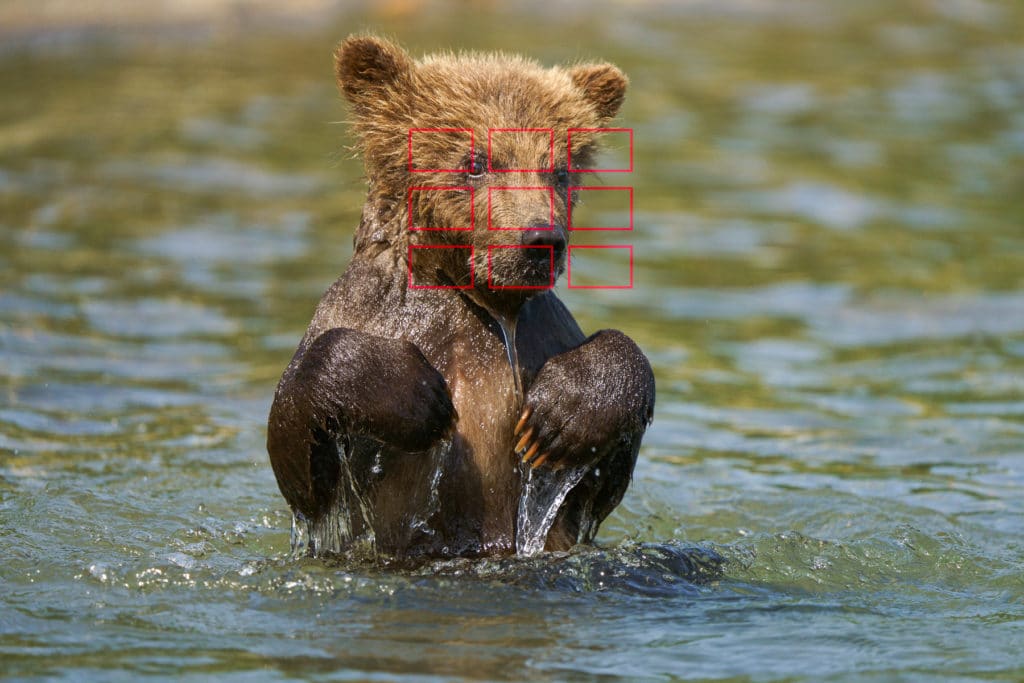
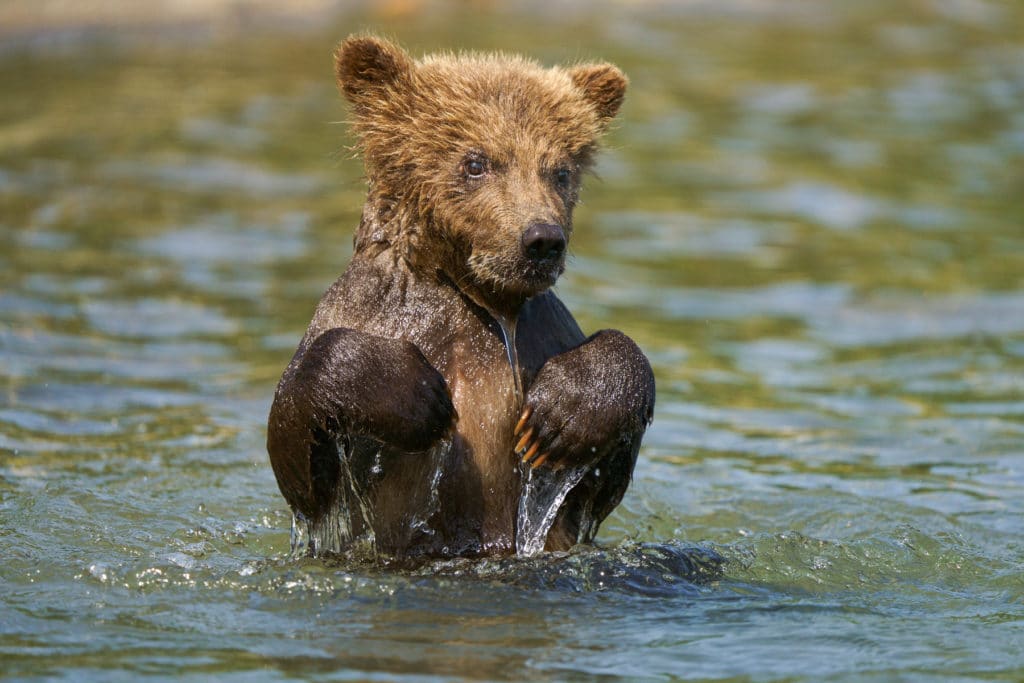
Dual UHS-II SD Slots
Who would think that in 2019, dual card slots would be a contentious camera spec, but here we are. While both Canon & Nikon opted to only include a single SD card slot with their mirrorless camera line, Sony has been offering dual SD card slots for years. The problem, however, is that only one of the SD slots was UHS-II, which offered the much faster data transfer and processing speeds. This would create a speed bottleneck for photographers that chose to write to both cards at the same time with Sony’s mirrorless cameras. I am happy to let you know that this is no longer an issue. With the dual SD card slots on the Sony a7R IV, you now get two UHS-II SD slots to use as you please out in the field. This is a welcome change, especially since the new 61 MP sensor can produce some very large image files!
The New Battery Grip
In addition to the a7R IV, Sony is also introducing a new battery grip (VG-C4EM) to match the new design and ergonomics changes to the camera (which I am positive will appear with all future a7 and a9 camera models as well). The grip is deeper and a touch longer, making plenty of room not only for your hands but also the larger buttons, rear joystick, and improved shutter button. Many of you will be happy to note that the grip also fits snugly against the a7R IV, providing a much better fit than the current VG-C3EM, which I was happy with until I placed my hands on this new grip!
Current Thoughts
After having spent a week with the Sony a7R IV in Alaska, I think it is safe to say that Sony has pushed the a7R product line to new heights. Not only does it offer a significant amount of resolution over all of its full-frame competition, but it has rounded out Sony’s flagship camera on many other fronts as well.
My key takeaway is that the a7R IV is both evolutionary and revolutionary. In terms of its natural evolution as the latest Sony flagship mirrorless camera, you can look at its new design/egonomics, dual UHS-II card slots, improved weather sealing and adjustable AF point color selection to name a few. Current Sony shooters and holdouts had requested all of these features, and I am sure everyone is stoked to see these changes.
So what is so revolutionary about the a7R IV? As they say, the devil is in the details! While the new 61mp sensor will get a lot of attention from the press, it is only part of the story. Sure it is the highest resolution full-frame camera ever produced, but it is important to note that Sony has accomplished this goal without sacrificing other elements of the camera. You still have 15 stops of dynamic range to work with, as well as the ability to shoot at 10FPS. The Canon 5DSR shoots 50.6mp images while only allowing for 5fps shooting. Additionally, you have the new and improved IBIS system that works hand in hand with the powerful autofocus system that includes real-time AF tracking, eye AF and AI that allows the a7R IV to be one of the most versatile cameras on the planet. While I am sure I will have plenty more to talk about when it comes to my full in-depth review, I can tell you that I will be adding a few a7R IVs to my gear bag moving forward!
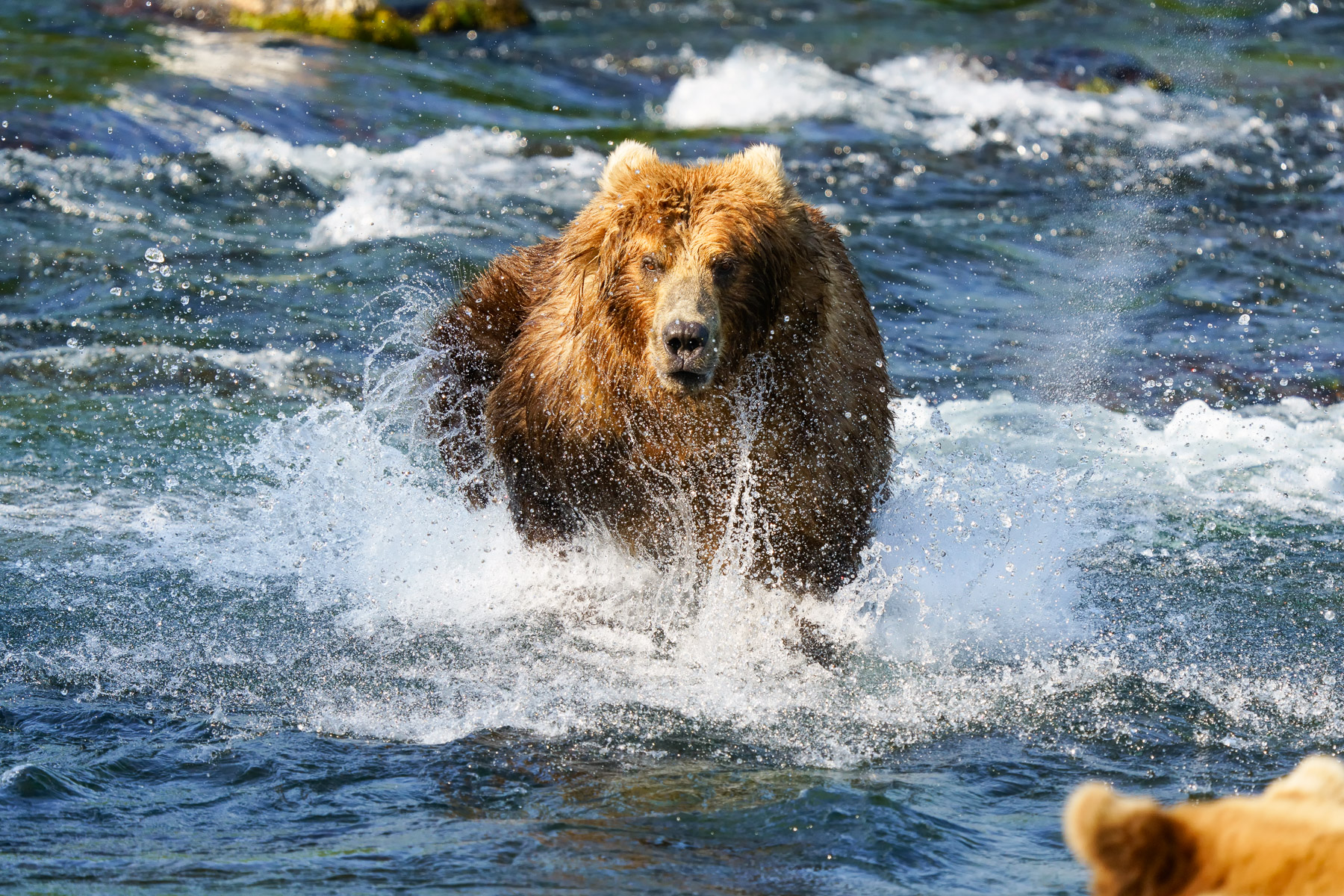
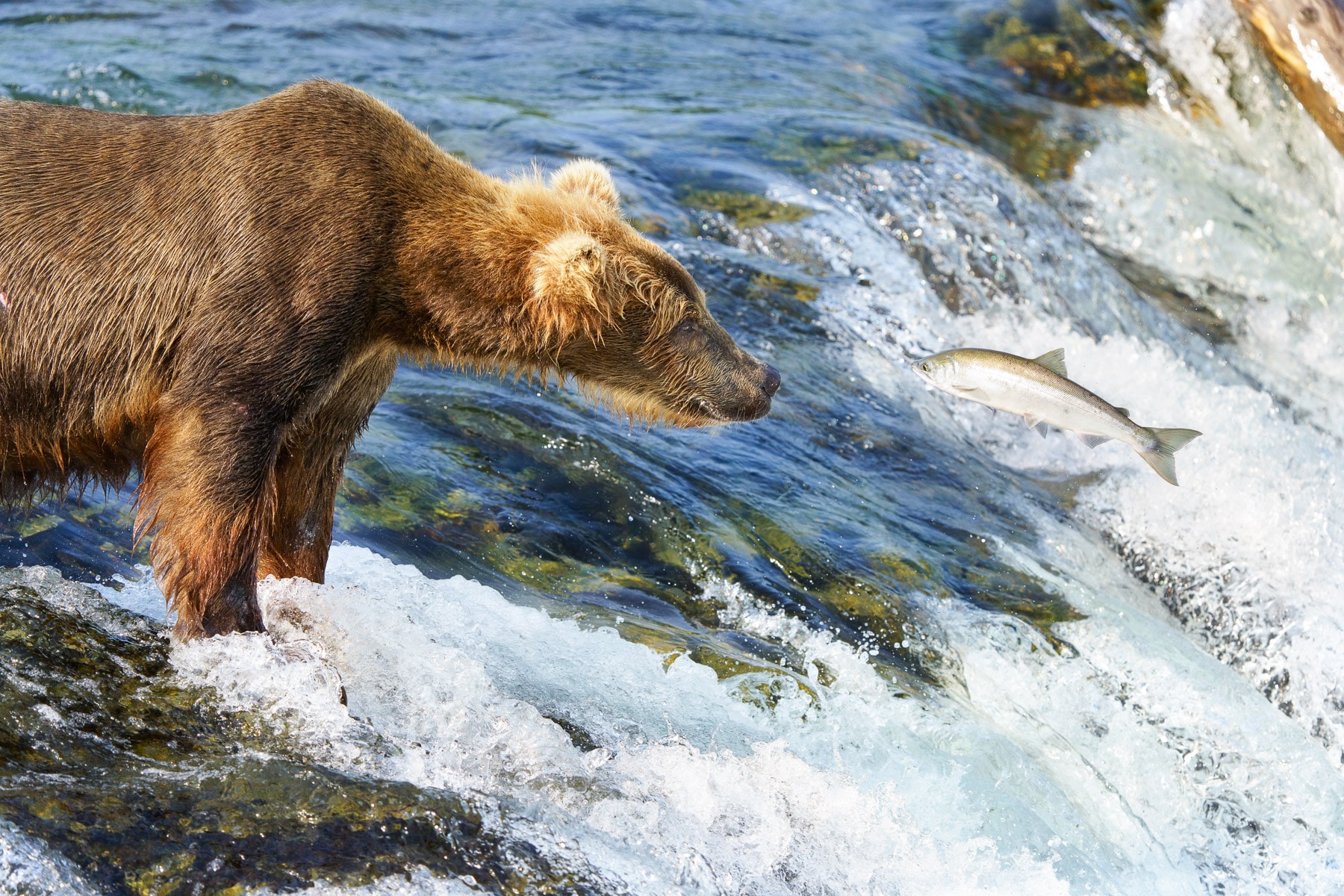
What Questions Do You Have?
While I will cover a lot more in with my in-depth review of the Sony a7R IV, I am sure many of you have questions! While I had to give the camera back to Sony with only a few available in the world at the time of writing this article, I did have a lot of hands-on time with this impressive camera.
If you are thinking of picking up the Sony a7R IV or if you already have one on order, be sure to check out my brand new Setup Guide. In it you will find 34 tips and tricks to help you not only setup the camera, but fully customize it as well!

